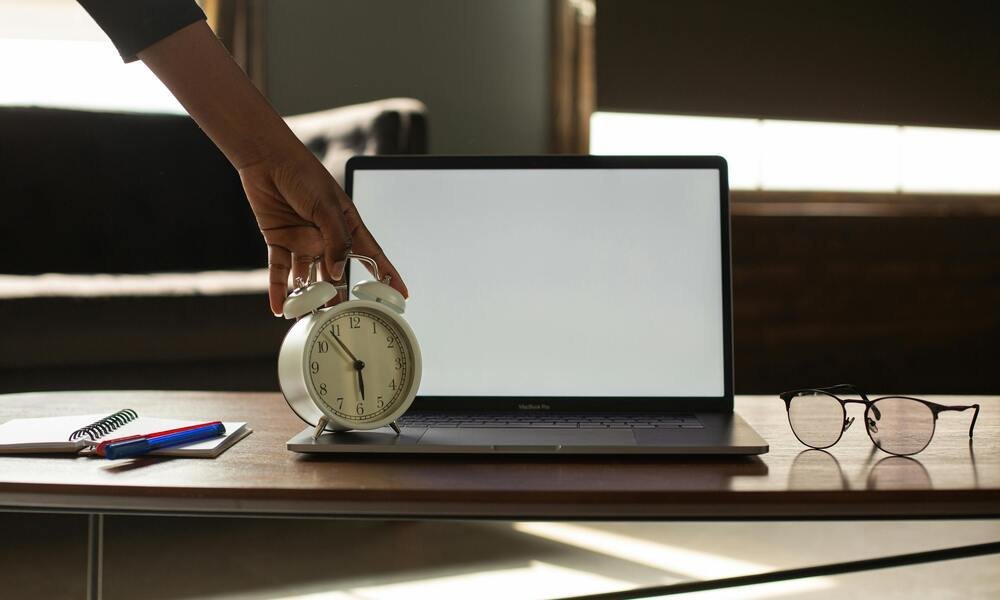In today’s digital age, screens dominate our lives. From smartphones and tablets to computers and TVs, our eyes are constantly glued to some form of screen. While technology has undoubtedly brought many benefits, excessive screen time can lead to a host of problems, including reduced productivity, eye strain, sleep disturbances, and even mental health issues. This blog will explore practical strategies to help you reduce screen time and improve productivity, enabling you to find a healthier balance in your digital life.
The Impact of Excessive Screen Time
Before diving into solutions, it’s important to understand the impact of excessive screen time on our lives:
Physical Health Issues
Prolonged screen time can cause a range of physical health problems, including:
- Eye Strain: Staring at screens for long periods can cause digital eye strain, leading to headaches, blurred vision, and dry eyes.
- Poor Posture: Sitting for extended periods in front of a screen can lead to poor posture, resulting in neck, back, and shoulder pain.
- Sleep Disruptions: Exposure to blue light from screens can interfere with the production of melatonin, a hormone that regulates sleep, leading to sleep disturbances and insomnia.
Mental Health Issues
Excessive screen time can also affect your mental well-being:
- Stress and Anxiety: Constant notifications and the pressure to stay connected can increase stress and anxiety levels.
- Reduced Attention Span: Switching between apps, websites, and tasks can reduce your ability to focus and concentrate.
- Social Isolation: Spending too much time on screens can lead to social isolation, as face-to-face interactions decrease.
Productivity Issues
Screens can be a major distraction, leading to reduced productivity:
- Multitasking: Trying to juggle multiple tasks simultaneously can lead to mistakes and decreased efficiency.
- Procrastination: Endless scrolling and browsing can waste valuable time that could be spent on more productive activities.
Strategies to Reduce Screen Time and Improve Productivity
Here are some effective strategies to help you reduce screen time and boost your productivity:
1. Set Clear Goals and Priorities
Having clear goals and priorities can help you stay focused and reduce unnecessary screen time. Start by identifying your most important tasks and setting specific, measurable goals for each day. This will give you a sense of direction and purpose, reducing the temptation to waste time on screens.
Tips:
- Create a To-Do List: Write down your tasks and prioritize them based on their importance and deadlines.
- Use Time Management Techniques: Techniques like the Pomodoro Technique, where you work for 25 minutes and take a 5-minute break, can help you stay focused and productive.
2. Establish Screen-Free Zones
Creating screen-free zones in your home or workspace can help you disconnect and reduce screen time. Designate specific areas where screens are not allowed, such as the dining room, bedroom, or certain areas of your office.
Tips:
- Create a Relaxation Space: Set up a comfortable space with books, puzzles, or other non-digital activities to encourage screen-free relaxation.
- Establish a Bedtime Routine: Avoid screens for at least an hour before bed to improve sleep quality. Instead, engage in calming activities like reading or meditation.
3. Limit Social Media Usage
Social media is a major contributor to excessive screen time. Limiting your use of social media can help you reclaim valuable time and improve your productivity.
Tips:
- Set Time Limits: Use built-in tools on your phone or third-party apps to set daily time limits for social media usage.
- Turn Off Notifications: Disable non-essential notifications to reduce distractions and the urge to check your phone frequently.
- Schedule Social Media Breaks: Allocate specific times during the day for checking social media, rather than constantly browsing throughout the day.
4. Use Technology Wisely
While reducing screen time is important, it’s also essential to use technology wisely to enhance productivity.
Tips:
- Use Productivity Apps: There are many apps designed to boost productivity, such as task managers, calendar apps, and focus timers. Use these tools to stay organized and manage your time effectively.
- Block Distracting Websites: Use website blockers to prevent access to distracting sites during work hours. This can help you stay focused on your tasks.
5. Take Regular Breaks
Taking regular breaks is crucial for maintaining productivity and reducing screen-related strain.
Tips:
- Follow the 20-20-20 Rule: Every 20 minutes, take a 20-second break to look at something 20 feet away. This helps reduce eye strain.
- Incorporate Physical Activity: Use break times to stretch, walk, or do light exercises. Physical activity can boost your energy levels and improve focus.
6. Practice Mindfulness and Meditation
Mindfulness and meditation can help you stay present and focused, reducing the urge to engage in mindless screen time.
Tips:
- Start a Meditation Practice: Dedicate a few minutes each day to meditation. This can help you develop a greater awareness of your screen habits and make more conscious choices.
- Use Mindfulness Techniques: Practice mindfulness throughout the day by paying attention to your breathing, body sensations, and surroundings. This can help you stay grounded and reduce stress.
7. Set Boundaries with Work
In today’s digital world, it’s easy for work to spill over into personal time, leading to increased screen time and burnout. Setting boundaries with work can help you achieve a better work-life balance.
Tips:
- Establish Work Hours: Define clear work hours and stick to them. Communicate these boundaries to your colleagues and clients.
- Create a Dedicated Workspace: Set up a designated workspace that you can leave at the end of the day. This can help you mentally separate work from personal time.
8. Engage in Offline Activities
Engaging in offline activities can provide a refreshing break from screens and help you recharge.
Tips:
- Pursue Hobbies: Dedicate time to hobbies and activities that don’t involve screens, such as reading, painting, gardening, or playing a musical instrument.
- Spend Time Outdoors: Nature has a calming effect and can help reduce stress. Spend time outdoors, whether it’s going for a walk, hiking, or simply enjoying a picnic in the park.
9. Monitor and Reflect on Your Screen Time
Tracking your screen time can provide valuable insights into your habits and help you make informed changes.
Tips:
- Use Screen Time Tracking Apps: Many smartphones have built-in screen time tracking features. Use these tools to monitor your usage and set goals for reducing screen time.
- Reflect on Your Habits: Regularly review your screen time data and reflect on your habits. Identify patterns and triggers that lead to excessive screen time and develop strategies to address them.
10. Seek Support
Making lasting changes to your screen habits can be challenging, but seeking support can make a significant difference.
Tips:
- Join a Support Group: Look for online or local support groups focused on reducing screen time and improving productivity. Sharing experiences and tips with others can provide motivation and accountability.
- Involve Family and Friends: Share your goals with family and friends and ask for their support. They can help you stay accountable and encourage you to stick to your plans.
Conclusion
Reducing screen time and improving productivity requires a conscious effort and commitment. By implementing these strategies, you can create a healthier balance in your digital life, leading to improved physical and mental well-being, better focus, and increased productivity. Remember, it’s not about eliminating screens entirely but using them mindfully and purposefully. Start small, make gradual changes, and celebrate your progress along the way.
FAQs for How to Reduce Screen Time and Improve Productivity
1. Why is reducing screen time important for productivity?
Reducing screen time is crucial for productivity because excessive screen use can lead to distractions, reduced focus, and mental fatigue. By limiting screen time, you can concentrate better on tasks, manage your time more effectively, and improve overall efficiency.
2. How can I set realistic goals to reduce my screen time?
Start by assessing your current screen habits and identifying areas where you can cut back. Set specific, achievable goals, such as limiting social media usage to 30 minutes per day or taking regular breaks from your computer. Use tools like screen time trackers to monitor your progress and adjust your goals as needed.
3. What are some effective ways to limit social media usage?
You can limit social media usage by setting daily time limits on your devices, turning off non-essential notifications, and scheduling specific times to check social media. Additionally, consider using apps designed to block or limit access to social media during work hours.
4. How can I create a more productive work environment by reducing screen time?
Creating a productive work environment involves establishing screen-free zones, using productivity apps, and taking regular breaks to avoid digital eye strain. Additionally, setting boundaries for work hours and creating a dedicated workspace can help you stay focused and reduce unnecessary screen time.
5. How can mindfulness and meditation help in reducing screen time?
Mindfulness and meditation can help you become more aware of your screen habits and make more conscious choices about your screen use. These practices can reduce stress and improve focus, making it easier to avoid mindless scrolling and stay present in your tasks.
6. What should I do if I find it difficult to stick to my screen time reduction goals?
If you find it challenging to stick to your goals, seek support from family, friends, or online communities. Share your goals with others and ask for their encouragement and accountability. Additionally, regularly review your screen time data, reflect on your habits, and make necessary adjustments to stay on track.



